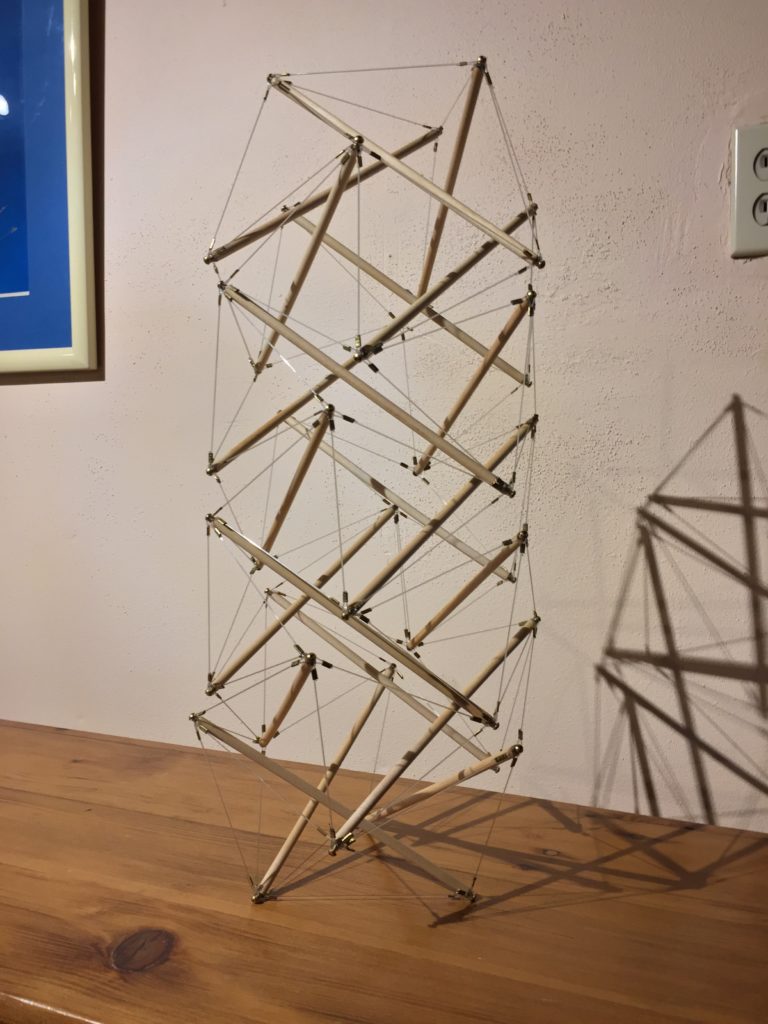INTRODUCTION
Although we consciously manage how we move about, most of the activities that synergistically facilitate movement unfold independently from our awareness. Less true for our fine motor skills, our standing and moving gross motor skills are dominated by networks of tensional/compressional interactions that blur the distinctions between bone, muscle, and the nervous system. This fractal web of connections, spanning from the nanometer to the meter, enables stance and movement sans conscious control of the details. Although we don’t directly engage with these networks, they constantly compensate for our movement and stance patterns.

This process continues throughout our lives. The adage “We don’t stop moving because we get old, we get old because we stopped moving” is appropriate here. Intentionally adjusting the “style” or “character” of these patterns alters the vector of forces within the network, activating the potential for “growing” the body towards a fully optimized function. (see this video for a model demonstration). Functional Bodywork facilitates this “repatterning” both by lessening restrictions in our fascial web (reducing tension) and training the automaticities of our standing and movement patterns (increasing tension and responsiveness). Some of this training happens at the level of our reflexes (reflexes can be developed) and some at the level of our conscious actions, requiring working from a biomechanical model. Tensegrity offers the most advanced model we currently have.
PAIN
Non-traumatic pain within our musculoskeletal system often signals that nodes within our tensional/compressional network have drifted beyond their functional scope. In other animals pain, a a musculoskeletal reflex, influences their stance and movement patterns while healing in an environment where movement is essential. In our species, our complex hierarchical neurophysiology can derail this reflex leading to persisting suboptimal stance and movement patterns that trigger chronic pain. These patterns can be trained to greater efficiency using functional bodywork tactics and strategies. Even if a surgical remedy is ultimately required, the outcome will likely be improved using these techniques.
HEALING
A foundational quality of living systems is that they are in disequilibrium, a state facilitating adaptation and the emergence of new forms. Functional Bodywork utilizes this quality of living things to add energy that increases the potential for change. Optimization is uniquely individual, encompassing physical, emotional, and psychological factors, as well as historical contingencies and goals, and is consequently elusive, with the goalposts continually moving. However, incremental improvements in optimization are usually readily identified that, when treated, result in quite dramatic extensions of functional scope.
PERFORMANCE
Efficiency in stance and gait correlates to mobility, tone, and stability. These qualities directly influence systemwide vigor and robustness. Approaching interventions with a model of optimized function unencumbered by the limitations of the traditional “Newtonian” mechanistic framework facilitates holistic adaptations recognized by the body as more efficient and which can be trusted and embraced by our innate automaticities. We experience this as enhanced performance across the spectrum of our actions. Not experiencing continued refinement of our stance and gait dynamics infers these functions are not holistically integrated and are somehow stuck.
TREATMENT
Functional bodywork tactics and strategies for facilitating optimization encompass the range of Manual Therapy treatments, from light touch to deep tissue. The presentation of training guidelines for optimizing stance and gait is an essential attribute. These tools and the paradigms within which they can be employed have evolved rapidly over the past few decades. As a practitioner of structural and functional bodywork since the early 1980s, I have been privileged to participate in this journey in this emergent field now encompassed by the label Spatial Medicine.
